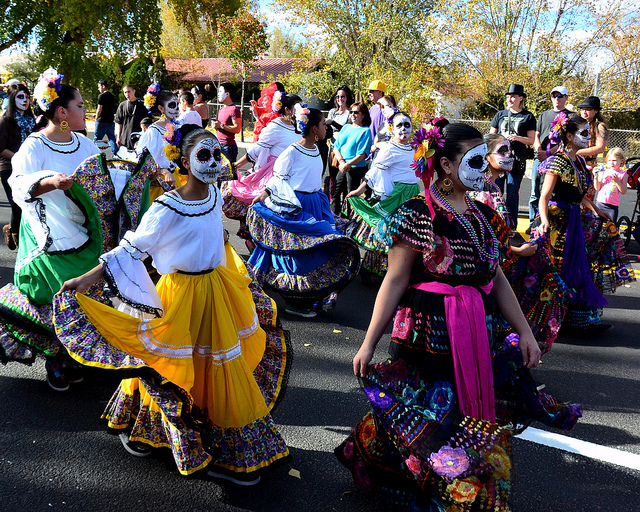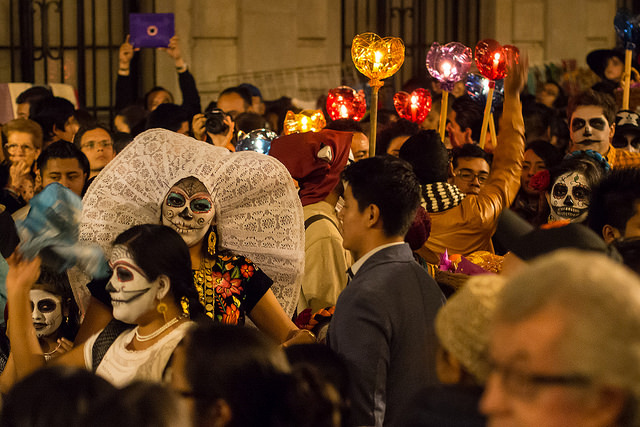Día de los Muertos: Remembering the Dead Across America
Date: November 1, 2015
Each year, as Halloween comes to an end, another holiday begins. In living rooms, cemeteries, and streets, families gather to celebrate Día de los Muertos (“Day of the Dead”), a two-day holiday in which the living remember their deceased loved ones. While it might sound macabre, the holiday is in fact a lively occasion, filled with music, food, dancing, parades, and extravagant costumes. Families build altars dedicated to their dead, replete with candles, marigolds, photographs, mementos, sugar skulls, and the favorite foods of the departed.
Though Día de los Muertos originated in Mexico, it has spread to many parts of North and Latin America, and has become increasingly celebrated in the United States. This year, you’ll find events happening all over the country, including a three-day celebration at the Smithsonian National Museum of the American Indian; a parade in Milwaukee, Wisconsin; and a day of activities at the Denver Botanic Gardens, among others.

(CC image courtesy of Larry Lamsa on Flickr)
Pre-Columbian in origin, Día de los Muertos has roots in the Aztec civilization, and has been celebrated for thousands of years. The Aztecs considered death to be the beginning of a new life and thus a cause for celebration, instead of mourning. They believed that the deceased returned to visit each year, and the living would welcome them with food and festivity.
Although Día de los Muertos was originally celebrated for the entire ninth month of the Aztec calendar, it was altered by the Spanish conquistadors, who attempted to make the pagan ritual more Catholic by moving it to coincide with All Saints’ Day and All Souls’ Day. Today, therefore, Día de los Muertos is celebrated during the first two days of November. Yet, despite the incorporation of Christian elements, the festival has maintained many of its indigenous components.

(CC image courtesy of rainy city on Flickr)
As Mexicans and other Latin Americans have immigrated to the United States, they have carried the traditions associated with Día de los Muertos with them, adapting them to their new context. Today, Mexican-American communities celebrate the traditional festival with modern flare and, over time, the holiday has become increasingly incorporated into mainstream American culture, particularly in states along the border like California, Texas, and Arizona, and other areas with large Hispanic communities. These days, Día de los Muertos regalia can often be found hanging in stores beside pirate, witch, vampire, and other popular Halloween costumes — and the popular sugar skull, or calavera, has now become ubiquitously embedded in American pop culture.

(CC image courtesy of Greg Willis on Flickr)
The incorporation of holidays originating from elsewhere into the American mainstream is nothing new. Many Americans lift their glasses — or steins, rather — in celebration of the German Oktoberfest; the Jewish holidays Rosh Hashanah and Yom Kippur are observed all across the United States; and whether you love or loathe it, Valentine’s Day, which was first commemorated throughout Europe, is on everyone’s minds come February. In the great melting pot that is America, new waves of immigrants, who bring their customs and traditions with them, give all of us more reasons to gather together and celebrate.
